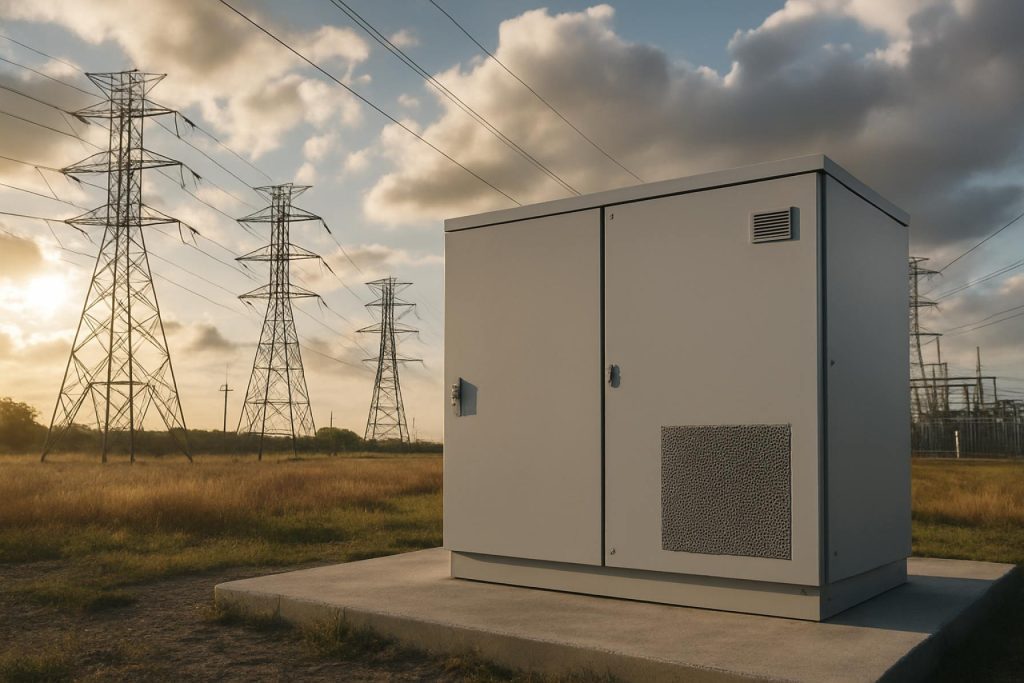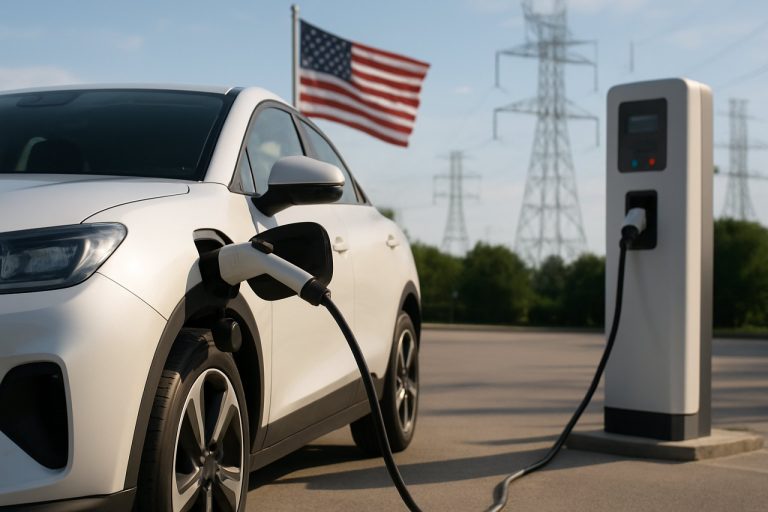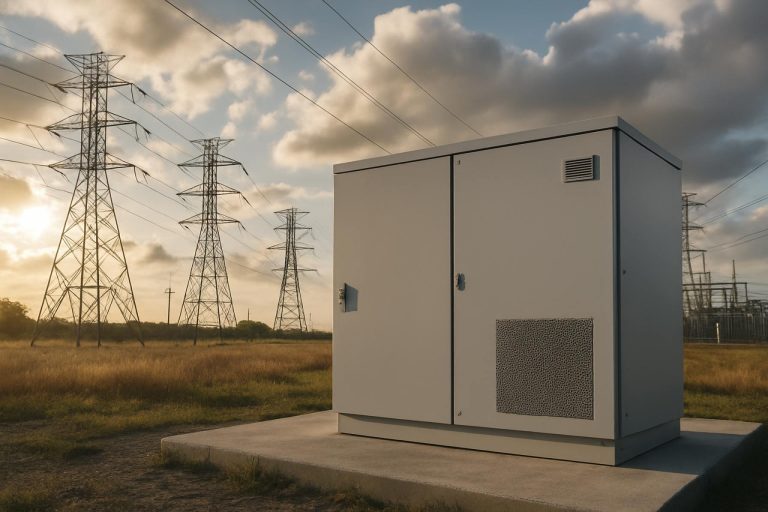
- America’s aging energy grid faces increasing stress from storms and heat waves, exposing major vulnerabilities.
- Innovative solid oxide fuel cell (SOFC) systems, like those from WATT Fuel Cell, offer local, reliable energy by converting natural gas into electricity without combustion.
- These systems provide cleaner, quieter backup power for homes, drastically reducing emissions and operational costs compared to traditional generators.
- Western Pennsylvania’s rich natural gas resources and advanced manufacturing drive the region’s clean energy transition.
- Utilities are adopting distributed generation to improve grid reliability and resilience, while bypassing costly infrastructure overhauls.
- The rise of SOFC technology signals a shift towards smarter, more sustainable and self-reliant energy for communities nationwide.
Crackling storms and sweltering heat waves pound America’s energy system year after year, revealing cracks in an aging grid that millions depend on to power daily life. When the lights flicker out in a storm-battered Pittsburgh suburb or a rural Pennsylvania home, grid vulnerabilities become more than inconveniences—they’re threats to food, comfort, even safety.
A new wave of energy technology is quietly rewiring the narrative. Nestled in the heart of Western Pennsylvania, WATT Fuel Cell recently completed the installation of its WATT HOME solid oxide fuel cell (SOFC) systems—a game-changing advance in local, resilient energy generation. Rather than waiting for sprawling grid overhauls, these discreet boxes tap into existing natural gas lines, converting fuel into clean, reliable electricity exactly when families need it most.
Imagine your house, warmed by quiet certainty, shrugging off the darkness during a neighborhood blackout. That’s the promise of SOFC systems: they don’t roar like diesel generators or cough out a plume of emissions. Instead, they operate with a ceramic-fueled alchemy that transforms natural gas into electricity at intense temperatures—750 to 1000°C—without combustion. The byproducts? Minimal. The benefit? Lifesaving reliability.
WATT’s approach draws on an elegant use of resources already woven into the land. Western Pennsylvania’s Appalachian basin is awash with natural gas, and these fuel cells seamlessly integrate with the pipes already running beneath streets and homes. Using a proprietary Additive Manufacturing Process (AMP), WATT scales up production while driving down costs, pointing to a future where clean, distributed energy isn’t a luxury—it’s the new normal.
This evolution doesn’t happen in isolation. Essential Utilities—the parent company of Peoples Natural Gas—serves nearly three-quarters of a million customers across Pennsylvania and Kentucky and has staked out a reputation for pairing tradition with smart upgrades. By backing WATT’s rollout, they’re betting on technologies that slash emissions, cut maintenance costs, and ultimately better protect their communities from outages.
The implications surge far beyond one state or one company. America’s industrial landscape was built on the sweat and power of coal and steel; now, the same region stands at the forefront of a new push, using cleaner chemistry and smarter business to turn resilience into reality. And as more third-party tests confirm reductions in household carbon emissions, the momentum grows.
With the proliferation of distributed generation—and the rise of readily available technologies such as SOFC systems—utilities have new tools to sidestep sprawling, expensive grid upgrades. WATT’s systems automate seamlessly, and, just as importantly, remind homeowners that the power to innovate sometimes lies right beneath their feet.
This is a revolution carried not by noise and smoke but by precision and vision. Other states and regions with abundant natural gas and aging grids are already watching closely, eyeing pilot programs and weighing rollouts of their own. The era of taking energy for granted is over; the era of smarter, cleaner self-reliance is just beginning.
As America charts this path, companies like WATT Fuel Cell provide a compelling answer to the question, “How do we keep the lights on, today and tomorrow?” With each installation, the country edges closer to a grid that is not only more reliable but also sharply attuned to the need for bold, sustainable progress.
For more on breakthroughs in energy, visit the U.S. Department of Energy. To learn about integrated utility innovation, see Essential Utilities.
The takeaway: Real change starts one home at a time. Clean energy no longer lives in the realm of future dreams—it’s arriving, quietly and efficiently, right now.
America’s Next-Gen Home Power: How Solid Oxide Fuel Cells Are Quietly Revolutionizing the Grid
Introduction: Why Resilient Home Power Matters More Than Ever
With increasingly severe storms and relentless heat waves repeatedly hammering America’s aging power infrastructure, grid outages are now a direct threat to daily life. The installation of WATT Fuel Cell’s WATT HOME solid oxide fuel cell (SOFC) systems in Western Pennsylvania marks a game-changing leap for home energy resilience, delivering quiet, local, and low-emissions power in the face of grid failures. But how does this technology actually work—and what makes it such a promising shift for homeowners and the nation’s energy future? Let’s explore key details beyond the initial headlines.
1. How Do Solid Oxide Fuel Cells (SOFCs) Actually Work?
Unlike traditional combustion generators, SOFCs operate through an elegant chemical process. Ceramic membranes conduct oxygen ions at extremely high temperatures (750–1000°C), enabling a controlled reaction between natural gas (methane) and oxygen—producing electricity, heat, and minimal emissions. This process offers remarkable efficiency, with reported electric efficiencies from 45%–60% and the potential for combined heat and power (CHP) setups to push total efficiency above 80% (source: U.S. Department of Energy).
2. Key Features, Specs, and Pricing
– Typical system output: Small residential SOFCs like WATT HOME deliver 1-2 kilowatts (kW), sustaining refrigerator, lighting, internet, and basic appliances even during outages.
– Emissions: SOFCs cut household carbon emissions by up to 50% compared to grid-only power when fueled by natural gas, with negligible NOx, SOx, and particulate output.
– Lifetime & Maintenance: With fewer moving parts and no combustion, lifespans can reach 10+ years; maintenance is typically limited to periodic cell stack replacement.
– Cost: As of 2023, residential SOFC systems in the U.S. are priced at $7,000-$15,000, but costs are trending downward due to manufacturing advances such as WATT’s Additive Manufacturing Process (source: Navigant Research).
– Compatibility: Easily connects to existing natural gas infrastructure—installations can be performed in homes already plumbed for gas heating.
3. Real-World Use Cases & Utility Integration
– Backup Power: Avoid food spoilage during outages and maintain home office operations or health equipment around the clock.
– Grid Support: Home SOFCs can feed surplus energy back to the grid (via net metering), bolstering grid stability during peak demand.
– Remote & Rural Areas: Especially valuable in rural communities where grid reliability is lowest and restoration times are longest.
– Commercial Use: Schools, clinics, and small businesses are piloting similar systems for mission-critical power.
4. Industry Trends & Market Forecasts
– Growing Interest: The U.S. stationary fuel cell market is projected to grow at 14% CAGR through 2030, led by increased grid stress and climate change adaptation (Source: MarketsandMarkets).
– Utility Partnerships: More gas utilities are exploring SOFCs as a way to stay relevant in a carbon-constrained future. Pilot programs have emerged in New York, Texas, and California.
– Hydrogen-Ready Future: Some SOFCs are compatible with hydrogen blends, anticipating a transition to even cleaner fuel sources as the hydrogen economy expands.
5. Pros and Cons—An Honest Overview
Pros:
– Silent and vibration-free—no generator noise
– Minimal air pollution and greenhouse gas emissions
– Highly efficient—can use excess heat for water or space heating
– Reduces reliance on centralized, vulnerable grids
– Long operational lifespan and low routine maintenance
Cons:
– Still relies on fossil fuel (natural gas), though emissions are far lower than combustion
– Upfront costs can be prohibitive without utility or government incentives
– Requires existing natural gas hookup (not feasible for homes without it)
– High operating temperatures demand robust material engineering and quality installation
6. Controversies & Limitations
– Methane Leakage: Any use of natural gas systemically risks methane leakage—which has a higher short-term climate impact than CO₂. Improvement in leak detection and pipeline integrity remains vital.
– Recyclability: Disposal and recycling of depleted ceramic fuel cells pose environmental questions that manufacturers are working to address.
– Incentives & Regulation: Policies on residential fuel cells vary by state; comprehensive incentives are needed to spur widespread adoption.
7. Security, Sustainability, and Safety
– Distributed Energy Benefits: Protects against cyberattacks or physical sabotage targeting centralized grid assets.
– Decarbonization: SOFCs bridge the gap between current infrastructure and a future dominated by renewables and green hydrogen.
– Safety: No combustion means lower fire risks; built-in CO detectors and safety shutoffs are standard in modern systems.
8. How-To Steps: Installing a Home SOFC
1. Check natural gas hookup compatibility.
2. Contact a certified installer (like those recommended by U.S. Department of Energy or local utility).
3. Analyze home load and select the appropriate system size (most homes need 1–2 kW).
4. Prepare an installation site—ventilation, access, and service clearances.
5. Schedule regular maintenance and monitoring.
FAQ: Pressing Questions Readers May Have
Q: Are SOFCs better for the environment than diesel generators?
A: Yes. SOFCs produce far less CO₂, virtually no NOx/particulates, and operate cleanly indoors—no fuel storage or exhaust venting required.
Q: Will my utility bill go down?
A: By generating power on-site (especially if you use both the electricity and the waste heat), SOFCs can significantly reduce utility spend, particularly during peak pricing or in areas with frequent outages.
Q: What about net-zero homes?
A: SOFCs complement rooftop solar—operating at night or during storms—creating a hybrid system with maximum resilience and lowest emissions.
Q: Can SOFCs run on renewables?
A: While currently fueled by natural gas, some models are being tested with renewable biogas or green hydrogen, further reducing carbon footprints.
Expert Insights & Future Predictions
Experts, including those at the National Renewable Energy Laboratory, predict distributed SOFCs could evolve into neighborhood-level microgrids, supporting EV charging and grid demand response. As fuel cell prices fall, and hydrogen infrastructure emerges, their environmental credentials will only improve.
Actionable Recommendations & Quick Tips
– Contact your gas utility to inquire about pilot programs or rebates for home fuel cells.
– Regularly inspect and service systems to ensure peak efficiency and safety.
– Pair with home energy monitoring for smart optimization—use generated power when rates are highest or the grid is most at risk.
– For those building new homes in storm-prone or rural areas, ask about “zero-blackout” design strategies using SOFCs.
For more information on distributed fuel cell power, visit the U.S. Department of Energy. Explore leading utility partnerships and innovation at Essential Utilities.
Conclusion:
Home fuel cell technology is transforming household resilience from a hope into a practical reality. Whether you’re protecting your family during the next blackout or cutting your carbon footprint today, SOFCs offer a proven path to smarter, cleaner living—starting now.



